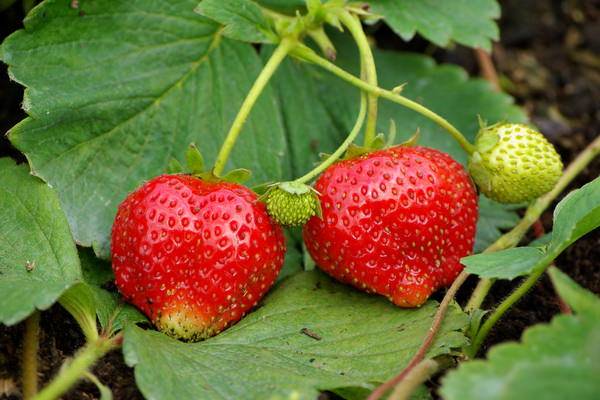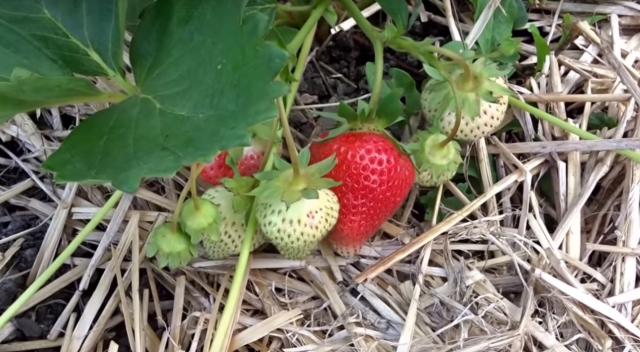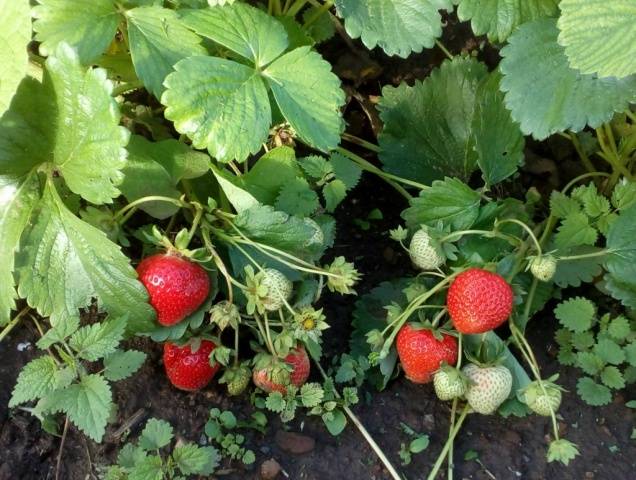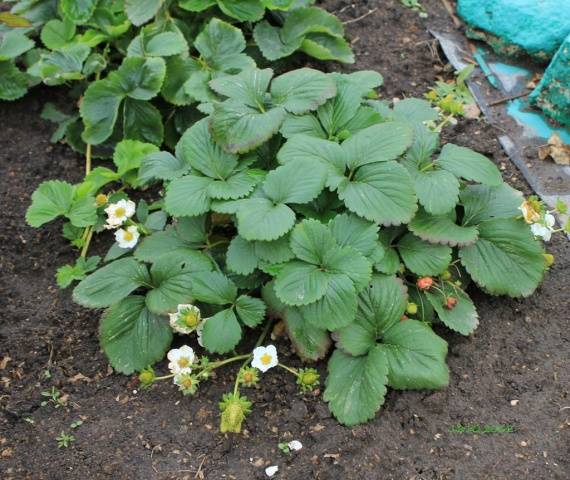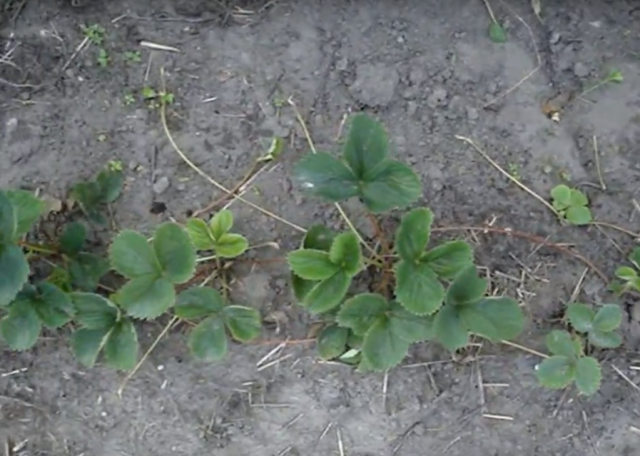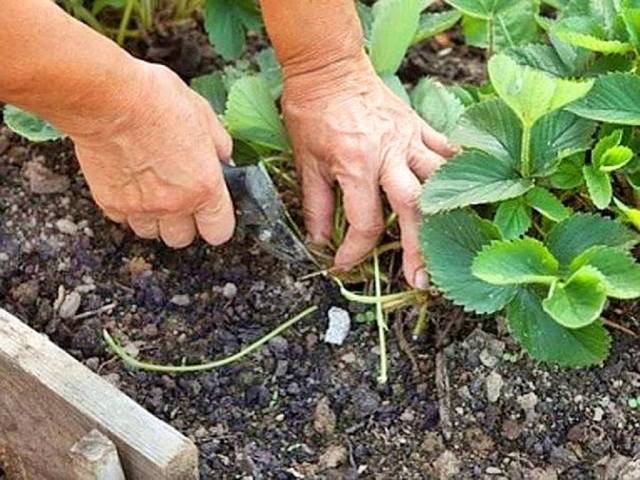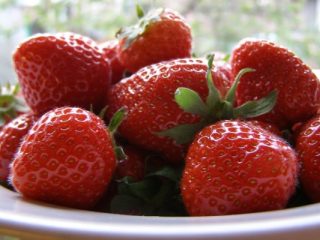Content
Many varieties of strawberries of foreign breeding have taken root in the country, which are suitable for climatic and soil conditions. The industrial variety Symphony was loved by our gardeners for its bright taste and unpretentiousness. Bred in Scotland back in 1979 based on the well-known Rhapsody and Holiday... These strawberries are grown outdoors and in greenhouses.
Characteristic
The longevity and popularity of the mid-late variety of Symphony strawberries is ensured by the extended period of collection of dessert berries. The fruits of the magnificent view can be enjoyed with pleasure for almost two months, starting from the end of May or mid-June, depending on the region. The Symphony variety is not remontant; it was bred for climatic conditions with frosty winters and short summers. And it meets the requirements with a harmonious composition of excellent taste, the ability to maintain an attractive appearance for a long time and resistance to harsh weather. The variety develops summer cottages and household plots in the Urals and Siberia, with the help of gardeners, enduring frosts.
According to gardeners, the strawberry variety Symphony keeps ripe berries on the bushes for a long time: they are harvested for several days without fear that the appearance and structure of the pulp will deteriorate. They also lie in containers for some time during transportation and retain their commercial attractiveness. On average, each strawberry bush yields 2 kg of berries, less in the year of planting. The strawberry harvests Symphony for the second year, as stated in the description of the variety and in the reviews, with good care, reach 3.5 kg per bush. Thanks to such positive properties of Symphony strawberries, it is grown by large and small agricultural producers. The variety also came to taste in amateur gardening, because it can grow in one place for five years without losing yield.
Symphony is a dessert variety; berries with wonderful healing properties are best consumed fresh. The strawberry variety is widely represented in the trade network, thanks to its delicious appearance. Berries are used by the food industry and at home for jam, jams and other preparations. Surplus dense berries can be frozen to preserve a drop of summer aroma for a winter day.
Advantages and disadvantages of the variety
The obvious advantages of the Symphony strawberry are reflected in the description of the variety, numerous photos and reviews of gardeners.
- Excellent dessert taste, large size and appetizing appearance;
- Amicable ripening and uniformity of fruits;
- Excellent yield of the variety that meets the requirements of industrial cultivation;
- Unpretentiousness to weather conditions. Grows in hot and cold regions without flaws for berries;
- High keeping quality and transportability;
- Variety resistance to verticillium, spotting and gray mold.
Some commentators consider the lack of remontant properties in the almost ideal Symphony strawberry cultivar as a disadvantage.
Description
Strawberry bushes Symphony are powerful, with dense foliage. The root system is well developed, deepens to 25-35 cm. Large leaves of a dark green hue, tough. Veins protrude from the bottom of the leaf blade. Shoots spread up to 40 cm, shortened peduncle horns are numerous. Peduncles are strong, slightly pubescent, with a large number of flowers.
Bright red, regular conical shape, berries of large and medium size. The skin is shiny. Symphony strawberries are dense, fleshy and juicy. The sweet berries smell like wild strawberries. They weigh 30-40 g. The seeds are deep in the fruit, small, yellow.
Growing
Strawberries are propagated by dividing the bushes and rooting the whiskers. As stated in the description of the Symphony strawberry variety, it is planted in August, September or April. Autumn plantings make it possible to harvest the first harvest next year. The site is prepared in advance. Six months before planting strawberries, they dig up the soil and fertilize. For 1 sq. m take a bucket of humus or compost, 150 g of superphosphate, 100 g of potash fertilizer.
Reproduction by divisions
Choose 3-4-year-old strawberry bushes Symphony - well-developed, with numerous horns and rosettes. Dig them out in spring or autumn and divide them into parts.
- Each part should have long, powerful roots, a horn, a rosette;
- In healthy seedlings, an apical bud is visible, shoots are strong and at least three leaves;
- You need to carefully consider when buying seedling leaves. Their deformation, wrinkling is not allowed. Such defects can be signs of a tick infestation.
Mustache reproduction
Strawberries of the Symphony variety have a little mustache. Most of all, they are reproduced by a 2-3-year-old bush. Planting material is taken from such plants.
- The tendril is cut off and placed in water with a solution of a rooting stimulator;
- When roots and a rosette are created, it can be transplanted into soft, nutritious soil;
- Water for 5 days daily to keep the soil wet;
- On the 6th day, the soil is mulched and not watered until the top layer dries;
- The seedling is placed on the site after 2 weeks.
Landing rules
Having prepared the seedlings and the plot, they mark out the ribbons for the strawberries. The symphony grows rapidly, scattering shoots to the sides, so the distance between the holes is 35 cm.If a two-line scheme is used, the distance is increased to 40 cm.
- The holes are dug to a depth that corresponds to the length of the roots, and filled with water;
- Fertilize with a mixture of peat and humus in 1 part;
- For better survival, pinch the longest root and cut off the leaves, leaving at least three;
- The outlet must be left on the surface;
- From above, the hole is mulched.
Care
After planting in autumn or early spring, young Symphony strawberries are covered with foil or spunbond to protect them from frost. If peduncles are created in the spring, they are cut off, giving a chance for the root system to grow stronger. With a lack of rain, strawberries are watered, then the soil is loosened and mulched. Make sure that no water gets on the plant. Accordingly, drip irrigation is preferable for strawberries. It is especially important during flowering and berry pouring.
- It is advisable to remove the autumn mulch in the spring with the upper ball of soil, removing the hidden pests together;
- The soil from another site is enriched with humus, compost and poured under the bushes of the Symphony variety;
- Cut off dry and damaged leaves from the bushes;
- Remove leaves after fruiting from bushes over two years old.
Top dressing
The Symphony variety needs regular fertilization in order to grow large berries.
- In the spring, for each bush, give 0.5 liters of nitroammophoska solution (25 g per 10 liters of water);
- Another option for spring feeding: 1 liter of mullein solution (1:10) and ammonium sulfate. Chicken droppings are diluted 1:15;
- During the formation of ovaries, Symphony strawberries are fed with wood ash, agents with potassium, phosphorus or complex fertilizers: Master, Kemira. Foliar dressing with boric acid is carried out;
- After fruiting, especially after mowing strawberry plants, the bushes are fertilized with urea, organic matter, and mineral complexes.
Preparing for winter
Fertilized in August, the matured shrubs enter the winter. In late autumn, strawberries are mulched with straw, covered with dry branches, and spruce branches can be put on top. The Symphony variety is winter-hardy, but if the frosts drop below 25 degrees, especially without snow, the bushes should be covered with agrotex or straw. The material is stretched over branches or on low arcs.
Plant protection
Some diseases of the Symphony variety are caused by fungi.
- Strawberries are sick with black rot - darkening of the roots. Horus, Phytodoctor are used;
- In greenhouses on the bushes of the Symphony variety, powdery mildew may spread, which is disposed of with the help of Fundazol, Switch;
- Fungicides will help fight wilting;
- From pests in the spring, the soil on the site is treated with copper sulfate or Bordeaux liquid.
A little care of planting will bring a generous harvest of tasty and healthy fruits.
